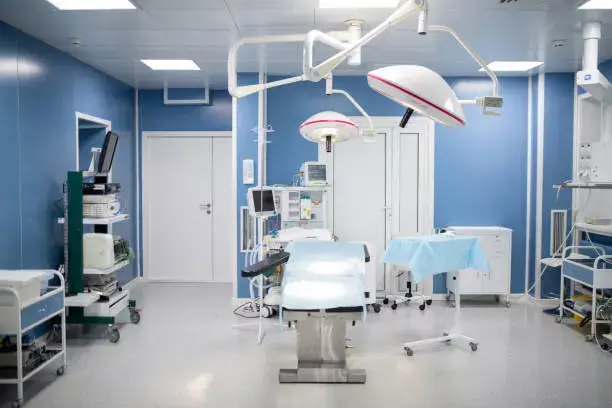- Home
- Medical news & Guidelines
- Anesthesiology
- Cardiology and CTVS
- Critical Care
- Dentistry
- Dermatology
- Diabetes and Endocrinology
- ENT
- Gastroenterology
- Medicine
- Nephrology
- Neurology
- Obstretics-Gynaecology
- Oncology
- Ophthalmology
- Orthopaedics
- Pediatrics-Neonatology
- Psychiatry
- Pulmonology
- Radiology
- Surgery
- Urology
- Laboratory Medicine
- Diet
- Nursing
- Paramedical
- Physiotherapy
- Health news
- Fact Check
- Bone Health Fact Check
- Brain Health Fact Check
- Cancer Related Fact Check
- Child Care Fact Check
- Dental and oral health fact check
- Diabetes and metabolic health fact check
- Diet and Nutrition Fact Check
- Eye and ENT Care Fact Check
- Fitness fact check
- Gut health fact check
- Heart health fact check
- Kidney health fact check
- Medical education fact check
- Men's health fact check
- Respiratory fact check
- Skin and hair care fact check
- Vaccine and Immunization fact check
- Women's health fact check
- AYUSH
- State News
- Andaman and Nicobar Islands
- Andhra Pradesh
- Arunachal Pradesh
- Assam
- Bihar
- Chandigarh
- Chattisgarh
- Dadra and Nagar Haveli
- Daman and Diu
- Delhi
- Goa
- Gujarat
- Haryana
- Himachal Pradesh
- Jammu & Kashmir
- Jharkhand
- Karnataka
- Kerala
- Ladakh
- Lakshadweep
- Madhya Pradesh
- Maharashtra
- Manipur
- Meghalaya
- Mizoram
- Nagaland
- Odisha
- Puducherry
- Punjab
- Rajasthan
- Sikkim
- Tamil Nadu
- Telangana
- Tripura
- Uttar Pradesh
- Uttrakhand
- West Bengal
- Medical Education
- Industry
Effectiveness of Manual Terminal Cleaning varies on different high touch surfaces in OTs, finds study

Jason M. Jennings et al conducted a study to evaluate the contamination level of selected high-touch surfaces in the operating room (OR) using a blacklight fluorescent marking system after a manual terminal clean.
Prior to the manual terminal clean, 16 high-touch surfaces were marked using a blacklight fluorescent gel. The marked areas were assessed the next morning for thoroughness of cleaning. Surfaces were categorized based on the average percent of the marks removed as "clean" (>75%), "partially clean" (26%-74%), or poorly cleaned(<25%). This process was repeated randomly 12 times. Terminal cleaning was done in the standard fashion, and the perioperative team was unaware of the initiation of this study.
The observations of the study were:
A total of 936 marks were analyzed. There was a significant difference in the number of marks completely clean (29.1%, 272/936) vs marks that were not touched (40.8%, 382/936), P<0.001.
Only the OR back table (75%) had a rating of clean.
Partially clean areas included
Mayfield table (72%),
overhead lights (70.1%),
infusion pump (61.1%),
clock reset button (58.3%),
table remote control (50%),
tourniquet machine (50%),
the OR table (33.3%).
Poorly cleaned surfaces included
anesthesia medication cart (21.8%),
door handles (20.8%),
phone (16.7%),
electrocautery unit (16.7%),
foot pedal (16.7%),
anesthesia cart (16.2%),
nurses' station (14.1%),
supply cabinet doors (6%).
"Despite the use of trained perioperative service personnel and policies at our institution, we found many areas of improvement needed in the terminal OR disinfection process. Of the high-touch surfaces we investigated, only the OR back table had an average rating of "clean". This inconsistency of cleaning and environmental contamination is similar to previous reports in the literature. These studies have clearly shown that visual inspection alone is not adequate in the terminal disinfection process. As such, most of these studies have recommended an enhanced cleaning protocol (i.e, staff education, UV light) to supplement this process" the authors opined.
The authors concluded that - Effectiveness of manual terminal cleaning varied greatly across surfaces. In general, surfaces further from the operative field were less likely to have markings removed. An adjunct to cleaning (ie, UV light) and perioperative education may be warranted, and future studies are needed to determine the best method to decrease environmental contamination
Further reading:
Effectiveness of Manual Terminal Cleaning Varies on High-Touch Surfaces Near the Operative Field
Jason M. Jennings, Roseann M. Johnson et al
Arthroplasty Today 17 (2022) 53-57
https://doi.org/10.1016/j.artd.2022.07.002
MBBS, Dip. Ortho, DNB ortho, MNAMS
Dr Supreeth D R (MBBS, Dip. Ortho, DNB ortho, MNAMS) is a practicing orthopedician with interest in medical research and publishing articles. He completed MBBS from mysore medical college, dip ortho from Trivandrum medical college and sec. DNB from Manipal Hospital, Bengaluru. He has expirence of 7years in the field of orthopedics. He has presented scientific papers & posters in various state, national and international conferences. His interest in writing articles lead the way to join medical dialogues. He can be contacted at editorial@medicaldialogues.in.
Dr Kamal Kant Kohli-MBBS, DTCD- a chest specialist with more than 30 years of practice and a flair for writing clinical articles, Dr Kamal Kant Kohli joined Medical Dialogues as a Chief Editor of Medical News. Besides writing articles, as an editor, he proofreads and verifies all the medical content published on Medical Dialogues including those coming from journals, studies,medical conferences,guidelines etc. Email: drkohli@medicaldialogues.in. Contact no. 011-43720751


